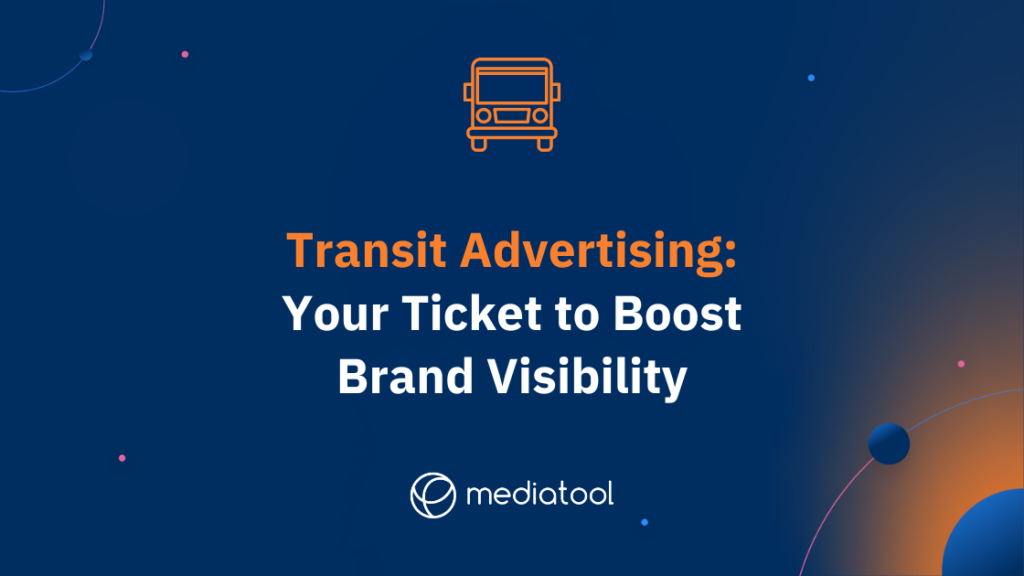If you’re not glued to your phone while traveling in the city, there’s no doubt you’ve come across transit advertising.
Our guide will cover it all – from understanding what transit advertising is, its stellar advantages, and various forms, to integrating it into your OOH advertising strategy.
Why stick around?
Because with millions using public transit daily, your brand’s next big break could be just a bus ride away.
Let’s get rolling!
What is Transit Advertising?
Transit advertising is all about strategically placing advertisements on vehicles and stations providing public transportation. Whether it’s buses, taxis, ferries, trains, subways, or trams, if it moves people, it’s a potential moving billboard! This type of advertising is an incredible way to reach commuters and pedestrians alike, ensuring your brand or message gets in front of a large, diverse group of individuals.
But what makes it so effective?
One key aspect of transit advertising is its unmissable nature. While it’s possible to change the TV channel or scroll past an ad online, you can’t ignore a massive advertisement on the side of a bus or in a train station, can you? Transit advertising is a unique opportunity that’s in your face, and it’s hard to overlook. This unavoidable exposure can create a lasting impression on potential customers and foster brand recognition.
Moreover, the beauty of transit advertising is its ability to engage consumers during those otherwise “wasted” moments of their day. Those moments when they’re waiting for the bus, sitting on a train, or walking to the subway, can be transformed into opportunities for brands to communicate their message.
But wait, there’s more!
Transit ads are on duty 24/7, relentlessly reaching new potential customers. They don’t turn off, and they don’t take holidays. They’re constantly out there, showcasing your brand to the world, day in and day out.
Additionally, transit advertising is versatile.
It can take many forms, including wrap ads covering an entire bus or train, interior cards inside public transportation vehicles, station posters, and even digital screens in high-traffic areas. This means you’ve got a variety of options to choose from to suit your particular brand and message.
Finally, let’s not forget how transit advertising caters to local and tourist audiences alike. People who live in the area will see your ad repeatedly, which reinforces your brand in their minds. On the other hand, tourists are often more observant of their surroundings and more likely to take note of your ad.
Transit advertising is a dynamic, flexible, and unignorable form of advertising that capitalizes on the predictable routines of commuters and the curiosity of tourists. Isn’t that something?
Transit Advertising Advantages
Alright, we’ve got the basics down.
Now let’s unravel the gifts transit advertising has to offer. Why should we get excited about advertising on a bus or a train? Is it worth your marketing dollars? The answer is a resounding yes!
1. Extended Reach: First and foremost, transit advertising is your ticket to a broad, diverse audience. Every day, millions of people use public transportation to commute to work, school, and leisure activities. And let’s not forget the pedestrians and drivers who spot these mobile billboards during their daily routines. With transit advertising, you’re reaching people of all ages, ethnicities, and income levels.
2. Constant Exposure: Unlike TV or digital ads that are shown intermittently, transit advertising is on the clock around the clock! Your ads are out there, in the public eye, 24/7, highly visible, offering continued exposure for your brand. Let’s put it this way: transit advertising is like that song stuck in your head – it just keeps going!
3. High Impact: Transit ads are typically large, colorful, and eye-catching. They’re hard to miss and even harder to ignore, ensuring that your message makes a strong impact. Plus, with limited distractions on a bus or train, your ad gets the spotlight it deserves!
4. Geographic Targeting: This form of advertising allows you to target specific neighborhoods, routes, or zones. Want to reach commuters in the financial district or students near the local university? With transit advertising, it’s a piece of cake!
5. Cost-Effective: Here’s something to get you smiling – transit advertising offers a fantastic return on investment. The cost per impression is often lower than other forms of advertising. This means that your brand can gain extensive exposure without breaking the bank.
6. Versatility: Transit advertising isn’t a one-size-fits-all approach. There’s a whole array of options, from bus wraps to subway ads. This flexibility allows you to tailor your campaign to fit your needs and goals.
7. Repeated Exposure: The daily commute tends to be repetitive. The same people often travel the same routes at the same time each day. This means your audience will be exposed to your ads repeatedly, reinforcing your message and increasing the likelihood of it sticking.
Transit advertising might seem like a small player in the grand scheme of advertising strategies. But when you consider these incredible advantages, it’s clear that this method of out-of-home advertising packs a punch. The potential of transit advertising is enormous – and who doesn’t like enormous potential?
Types of Transit Advertising
Transit advertising isn’t a one-trick pony. It comes in different shapes and sizes, each with its unique perks. Let’s dive into the different types of transit advertising and see which one gets your creative juices flowing!
Bus Advertising
Arguably the most recognizable form of transit advertising, bus advertising has proven to be incredibly effective. Exterior bus ads, (large format ad space), often referred to as ‘King, Queen, or Tail’ ads depending on their position, transform buses into mobile billboards that traverse the city. Then there are the bus wraps – they’re the ones that cover the entire bus, creating an undeniably bold statement. Can you imagine your brand messaging cruising around town, grabbing attention at every corner?
And let’s not forget about interior bus ads. Aimed at passengers with little else to distract them, these ads can provide more detailed messaging for a captive audience. Plus, with the average bus ride lasting around 20 minutes, you’ve got plenty of time to make an impression.
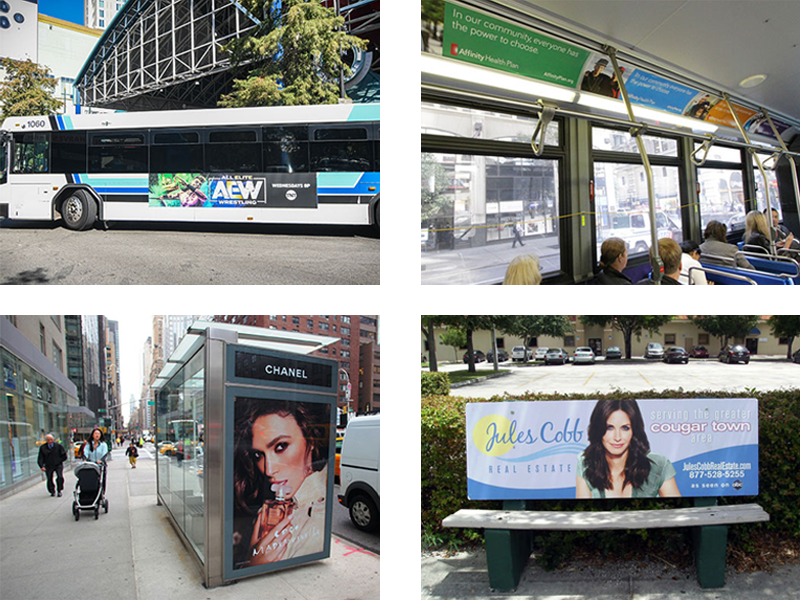
Train & Subway Advertising
Much like buses, train stations and subways offer exterior and interior advertising opportunities. Train wraps provide large, moving canvases for brands to get creative, while interior ads can engage riders during their commute.
Moreover, advertising in train and subway stations can be a game-changer. Posters, banners, digital billboards – these stations provide multiple touchpoints to engage with consumers. And remember, train, and subway users are often daily commuters, leading to repeated exposure to your ads.
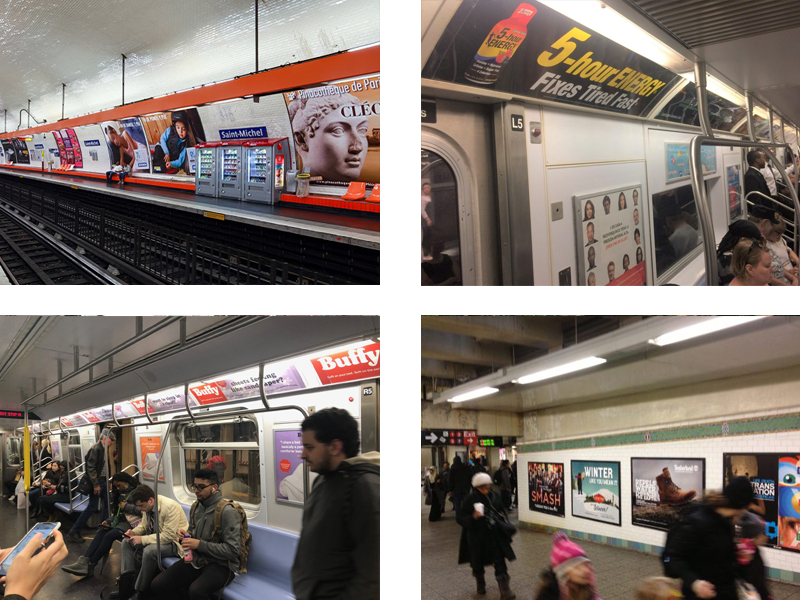
Taxi Advertising
Taxis are like bees, buzzing around the city, reaching areas other public transportation might not. Taxi tops provide high visibility, and full taxi wraps can impact strongly. Not to mention, interior ads can reach passengers heading to shopping, dining, or entertainment venues.
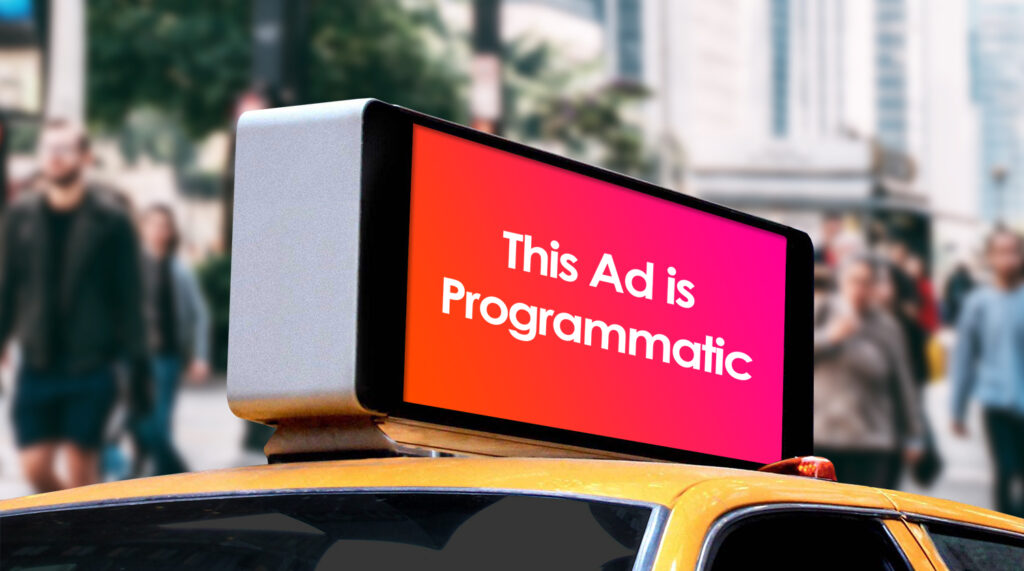
Airport Advertising
Airports are hubs of activity, bustling with travelers who often have time to spare. From digital screens and banners to luggage carts and boarding pass ads, airport advertising offers numerous ways to reach a diverse, often upscale, captive audience.
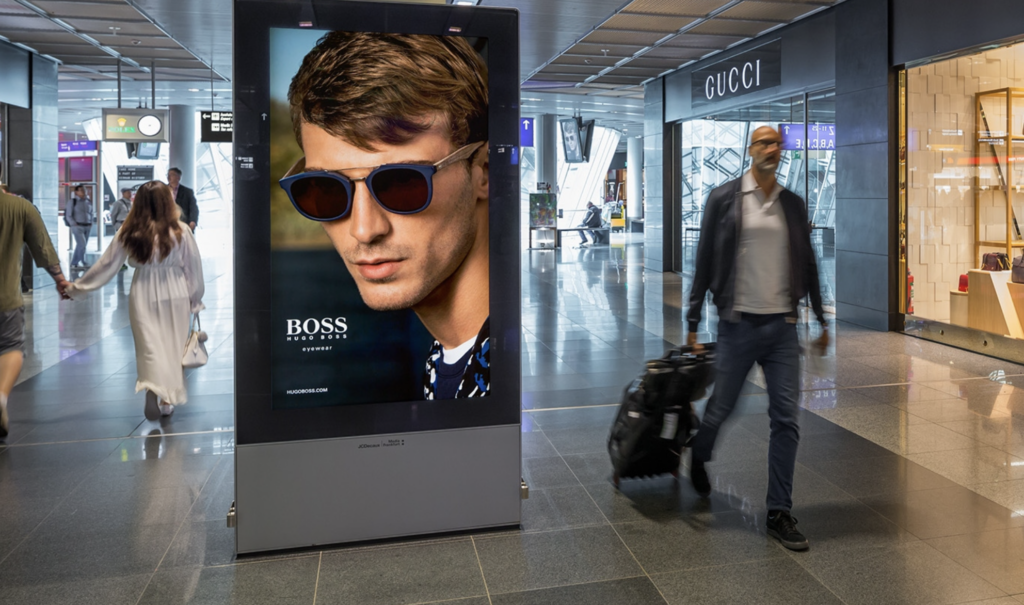
Bike Share Advertising
With the rise of bike-sharing programs, bike ads are becoming a fresh and eco-friendly transit advertising option. They’re typically seen in downtown areas, parks, and tourist spots, allowing for localized targeting.
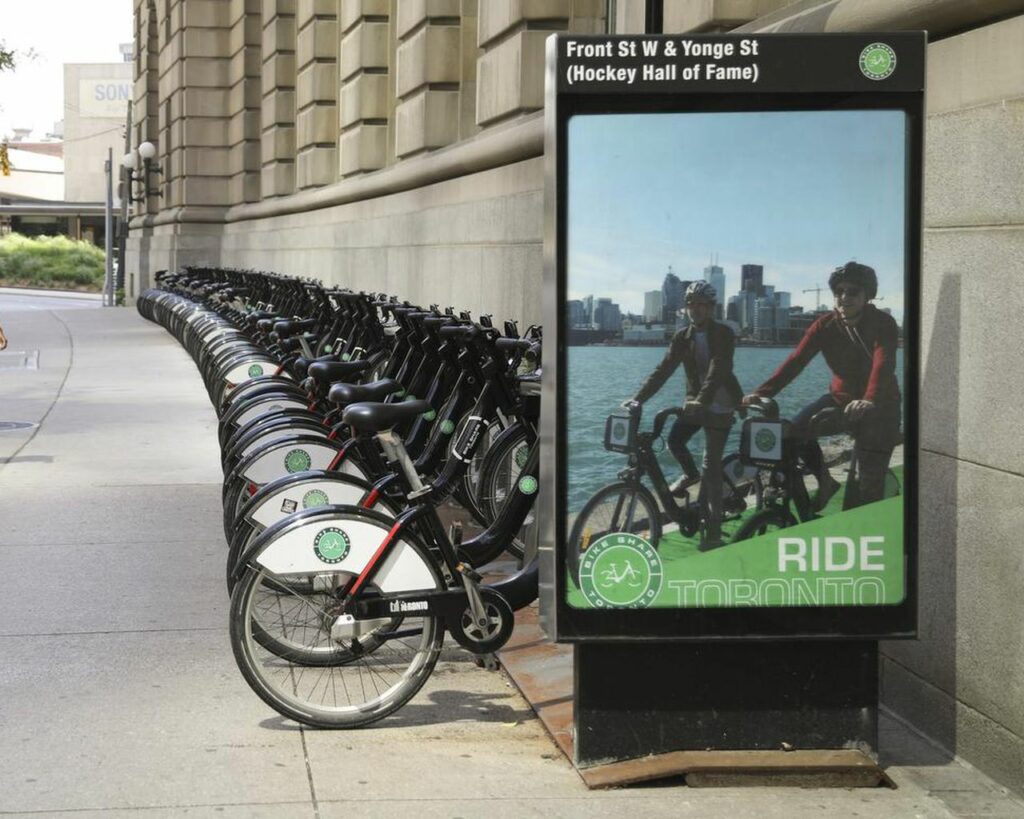
Ferries and Water Taxis
Water-based transit advertising, though niche, can offer unique opportunities. Whether an ad on a ferry crossing a busy harbor or a branded water taxi, these options provide an unusual and memorable advertising platform.
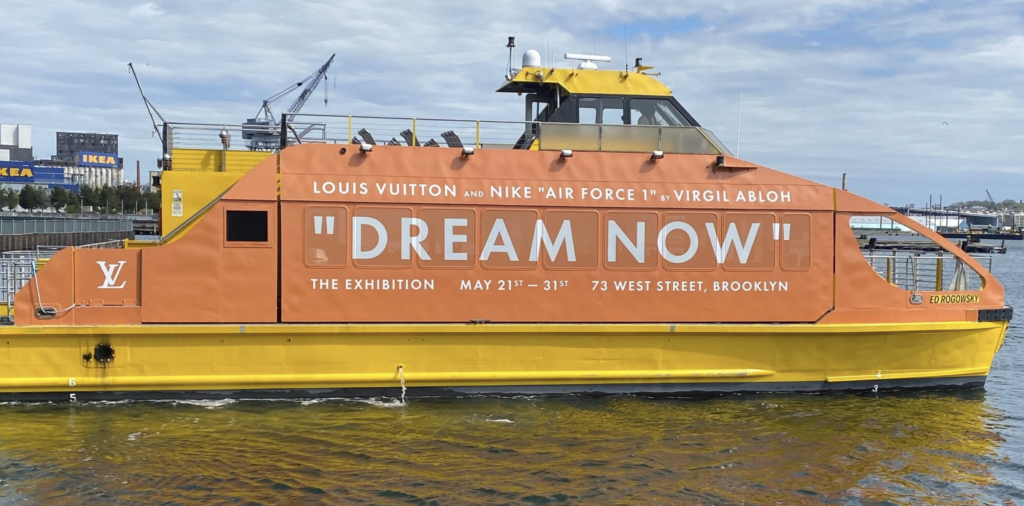
Digital Transit Ads
With technology permeating all areas of our lives, transit advertising hasn’t been left behind. Digital screens are increasingly popping up in buses, trains, and stations, offering dynamic, engaging, and sometimes interactive ads.
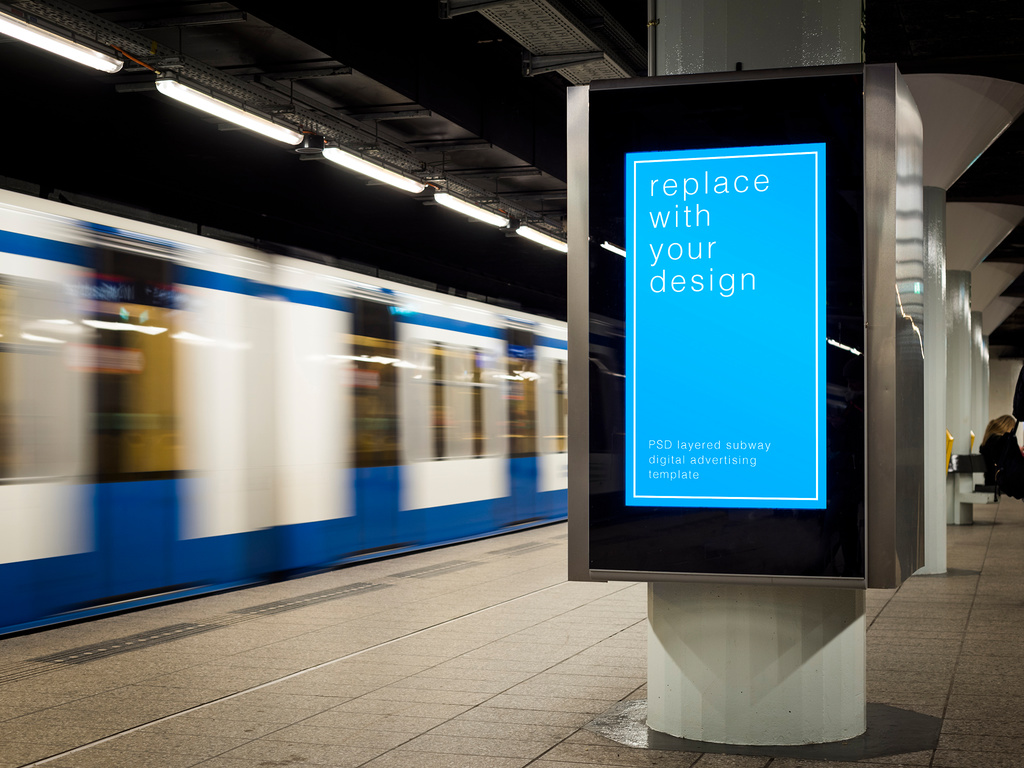
How Does it Fit Into Your OOH Advertising Strategy?
Let’s get down to the nitty-gritty. You’re intrigued by transit advertising, but you’re asking the golden question: “How does it fit into my existing Out-of-Home (OOH) advertising strategy?” Or perhaps, “Should it be part of my strategy?” These are excellent questions. Let’s find some answers!
First things first transit advertising is a type of OOH advertising. It operates in the public space, engages consumers on the go, and offers a blend of wide-reaching, impactful exposure and geographic specificity.
Sounds good, right? But not so fast. Before adding it to your outdoor advertising strategy, there are several factors to consider:
Your Target Audience
Who are you trying to reach?
Transit advertising can offer direct access to these individuals if your target audience consists largely of daily commuters or city dwellers. Remember, millions of people use public transportation on any given weekday. Transit advertising might be your perfect match if these are the folks you’re after.
Your Goals
What do you aim to achieve? If brand awareness is your goal, transit advertising’s constant visibility can be incredibly beneficial. Looking to promote a specific local event or store? Geographic targeting makes it a strong contender. Think about your objectives and how transit advertising might serve them.
Your Budget
Don’t let anyone tell you advertising is a place to skimp on the budget. But remember, some advertising channels offer better returns on investment than others. Transit advertising is typically more cost effective than traditional forms of advertising like TV or radio, allowing you to reach a large audience without blowing your entire marketing budget.
Your Creative Capabilities
Do you have the creative juice to design eye-catching, engaging ads suitable for transit formats? Unlike digital ads, where you can rely on interactive elements or video, transit ads often rely on strong visuals and succinct, powerful copy to make an impact.
Your Existing Strategy
Does transit advertising complement your existing OOH strategy? If you already have billboards or other forms of OOH advertising in place, transit advertising could offer an additional touchpoint, reinforcing your message across multiple platforms.
Transit advertising isn’t a one-size-fits-all solution. It should be seen as a tool in your OOH advertising toolbox, ready to be deployed when the situation fits. Take a moment to consider your audience, goals, budget, and existing strategy. If transit advertising aligns with these elements, it might be time to hop on board the transit advertising train.
Transit Advertising Examples – Some Of The Most Creative Campaigns
You’ve got the theory, but an example or two can bring the story to life. Here are some real-world transit advertising campaigns that captured the attention and hit the mark with their messaging.
1. Copenhagen Zoo ‘Snake Bus’ Campaign:
The Copenhagen Zoo launched a full bus wrap to look like a gigantic constrictor snake, squeezing the life out of it. The campaign left a lasting impression and got people talking and, most importantly, visiting the zoo. The message was clear: adventure awaits at Copenhagen Zoo.
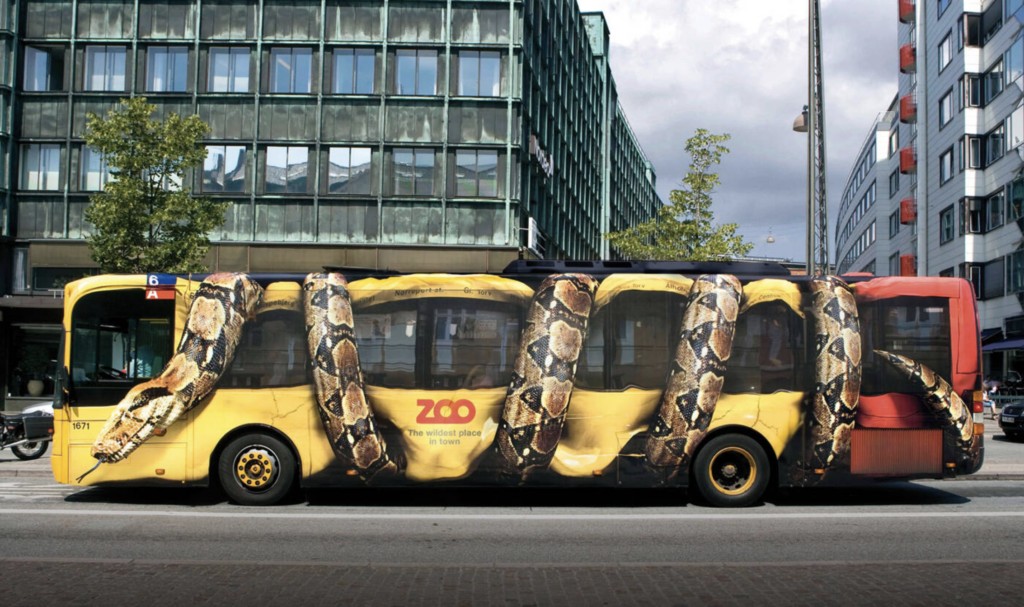
2. Lay’s ‘Potatoes Installation’ Campaign:
Lay’s had real potatoes hanging from a ceiling, accompanied by the tagline, “Our potatoes are grown closer than you may think.” This simple, yet impactful campaign, effectively communicated Lay’s commitment to sourcing local ingredients. It’s a clear demonstration of how transit advertising can not only catch eyes but also convey meaningful brand messages.
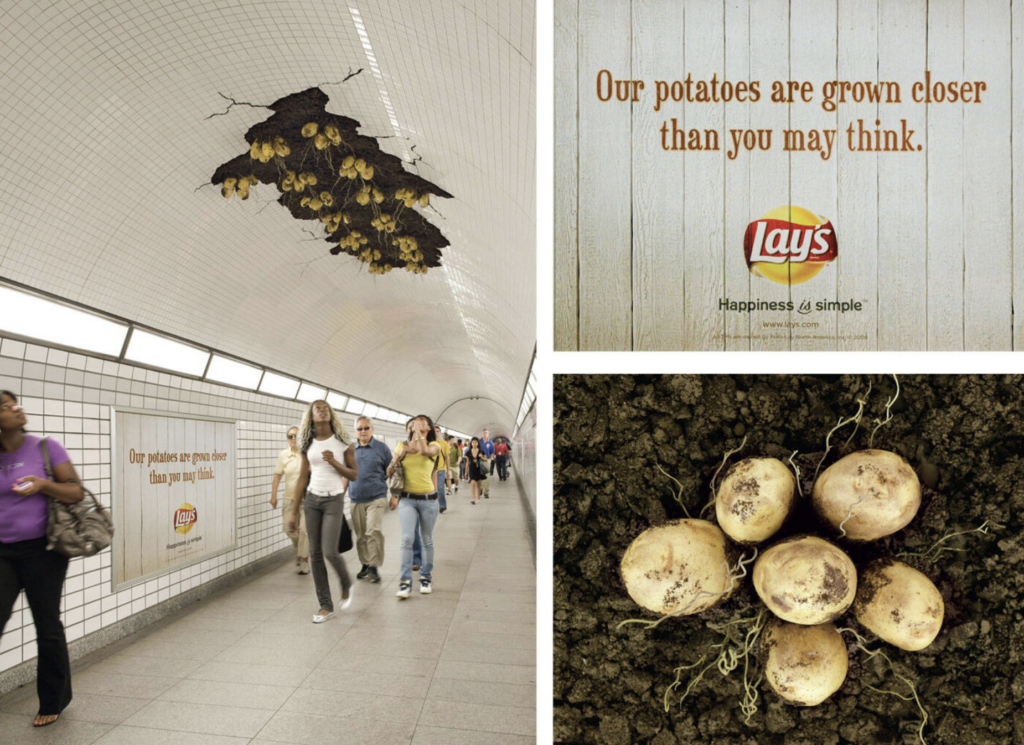
3. Pepsi Max ‘Unbelievable Bus Shelter’ Campaign:
Pepsi Max created an interactive augmented reality experience that transformed a bus shelter display into a window that augmented unbelievable scenarios into the real world. The digital OOH campaign shared their brand’s message of, “Live For Now.”
4. Caribou Coffee’s ‘Ovens out of transit shelters’ Campaign:
Caribou Coffee launch its new hot breakfast sandwiches in a very warm way that benefits Minnesotans during wintertime. They created ovens out of transit shelters, including real heat, to showcase the hot and delectable new menu items.
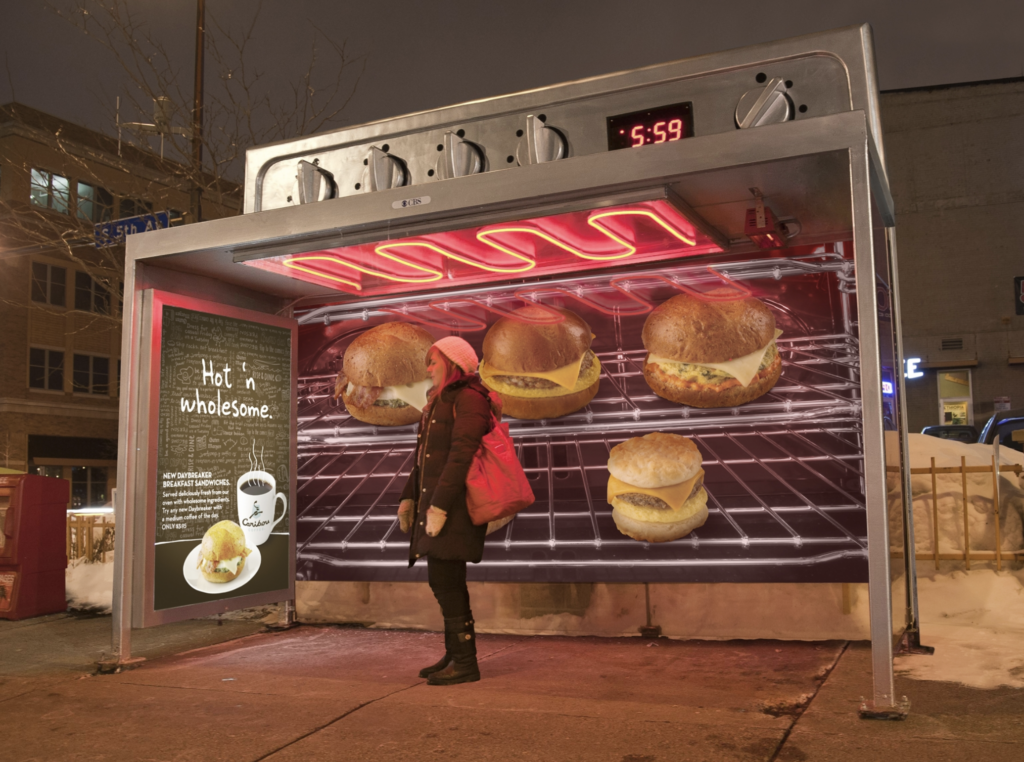
5. Airbnb’s ‘Belong Anywhere’ Campaign:
Airbnb adorned subway stations with stunning photographs of unique accommodations available through their platform, alongside the slogan “Belong Anywhere.” These ads showcased the diversity of Airbnb’s offerings and promoted their core value of making travelers feel at home, no matter where they are.
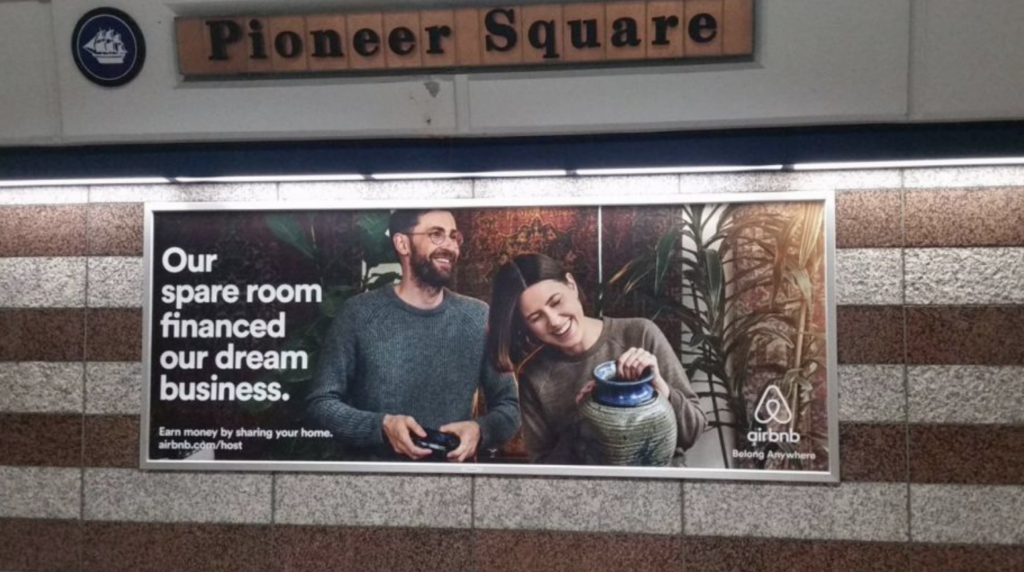
Airbnb ad on Seattle light rail (Photo by Judy Blanco)
These examples demonstrate how brands can leverage transit advertising to enhance brand recognition, engage with their target audience, and communicate their core values. Remember, effective transit advertising combines compelling visuals with a clear, strong message that aligns with your brand and resonates with your audience.
What’s Next?
Building far-reaching campaigns can be tough. If you want to have complete control over planning, measuring and reporting on all of your campaigns from one unified platform – look no further! With Mediatool you have all these resources and more in one place. Want to learn more? Take a tour of Mediatool today.
